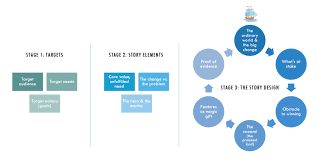Table of Contents
In a world inundated with information and content, the ability to connect with audiences on an emotional level has become essential for businesses, brands, and individuals seeking to stand out and make a lasting impact. One powerful tool for forging these connections is Strategic Storytelling—a method that goes beyond mere conveyance of information to engage emotions, foster empathy, and create memorable experiences. In this article, we will explore the potential of strategic storytelling and how it can be used to build emotional connections with your audience.
Understanding Strategic Storytelling
Strategic storytelling is the art of crafting narratives with a purpose. It involves selecting and shaping stories to achieve specific objectives, whether it’s to educate, entertain, persuade, or inspire. Unlike traditional forms of communication, strategic storytelling is not solely focused on delivering facts or messages; rather, it aims to engage the audience on a deeper level by tapping into their emotions and personal experiences.
The Power of Emotional Connections
Emotions play a significant role in decision-making and behavior. Studies have shown that emotionally engaging content is more likely to be remembered, shared, and acted upon than content that lacks emotional resonance. By evoking emotions such as joy, sadness, fear, or nostalgia, strategic storytelling can create powerful connections with audiences, fostering loyalty, trust, and affinity towards brands and individuals.
Building Emotional Connections Through Storytelling
So, how can you harness the potential of strategic storytelling to build emotional connections with your audience? Here are some key strategies to consider:
Know Your Audience
Understanding your audience is crucial for effective storytelling. Take the time to research and analyze their demographics, preferences, and values. Tailor your stories to resonate with their interests, aspirations, and pain points, ensuring that your narratives are relevant and meaningful to them.
Identify Shared Values and Beliefs
Find common ground with your audience by identifying shared values and beliefs. Craft stories that reflect these shared ideals, showcasing how your brand or message aligns with their worldview. By reinforcing shared values, you can create a sense of kinship and belonging that strengthens emotional connections.
Appeal to Emotions
Emotions are the heart of storytelling. Use emotional storytelling techniques to evoke feelings of empathy, compassion, or inspiration in your audience. Whether it’s through personal anecdotes, testimonials, or visual imagery, aim to elicit emotional responses that resonate with your audience’s experiences and aspirations.
Use Authentic and Relatable Characters
Create characters that are authentic, relatable, and multidimensional. Your audience should see themselves reflected in your characters, allowing them to empathize and connect with the story on a personal level. Avoid clichés or stereotypes and strive to portray characters that feel genuine and true to life.
Show, Don’t Tell
Engage your audience’s senses by using descriptive language and vivid imagery to bring your story to life. Instead of simply stating facts or messages, show them through compelling narratives that paint a vivid picture in the audience’s mind. By creating sensory experiences, you can immerse your audience in the story and make it more memorable and impactful.
Foster Engagement and Interaction
Encourage audience engagement and interaction by inviting them to participate in the storytelling process. Whether it’s through polls, quizzes, or user-generated content, create opportunities for your audience to connect with your story on a deeper level. By involving them in the narrative, you can foster a sense of ownership and investment in the story’s outcome.
Case Studies: Examples of Emotional Storytelling Done Right
To illustrate the power of emotional storytelling, let’s look at some real-world examples of brands and individuals that have successfully built emotional connections with their audience:
Nike: “Just Do It”
Nike’s “Just Do It” campaign is a classic example of emotional Strategic Storytelling done right. By focusing on themes of perseverance, determination, and overcoming obstacles, Nike’s ads resonate with audiences on a deep emotional level, inspiring them to push past their limits and pursue their dreams.
Coca-Cola: “Share a Coke”
Coca-Cola’s “Share a Coke” campaign is another excellent example of emotional storytelling. By personalizing their product packaging with people’s names, Coca-Cola created a sense of inclusivity and connection, encouraging consumers to share a Coke with friends and loved ones, fostering emotional bonds and positive associations with the brand.
Humans of New York
The Humans of New York project, started by photographer Brandon Stanton, tells the stories of ordinary people in New York City. Through poignant portraits and candid interviews, Stanton captures the joys, struggles, and triumphs of everyday life, fostering empathy and understanding among his audience and creating a global community united by shared humanity.
Conclusion
In conclusion, strategic storytelling is a powerful tool for building emotional connections with your audience. By understanding your audience, identifying shared values, appealing to emotions, using authentic characters, showing instead of telling, and fostering engagement, you can create narratives that resonate deeply with your audience, fostering loyalty, trust, and affinity. By harnessing the potential of strategic storytelling, you can create meaningful connections that transcend transactional relationships, fostering long-term relationships and driving business success.





